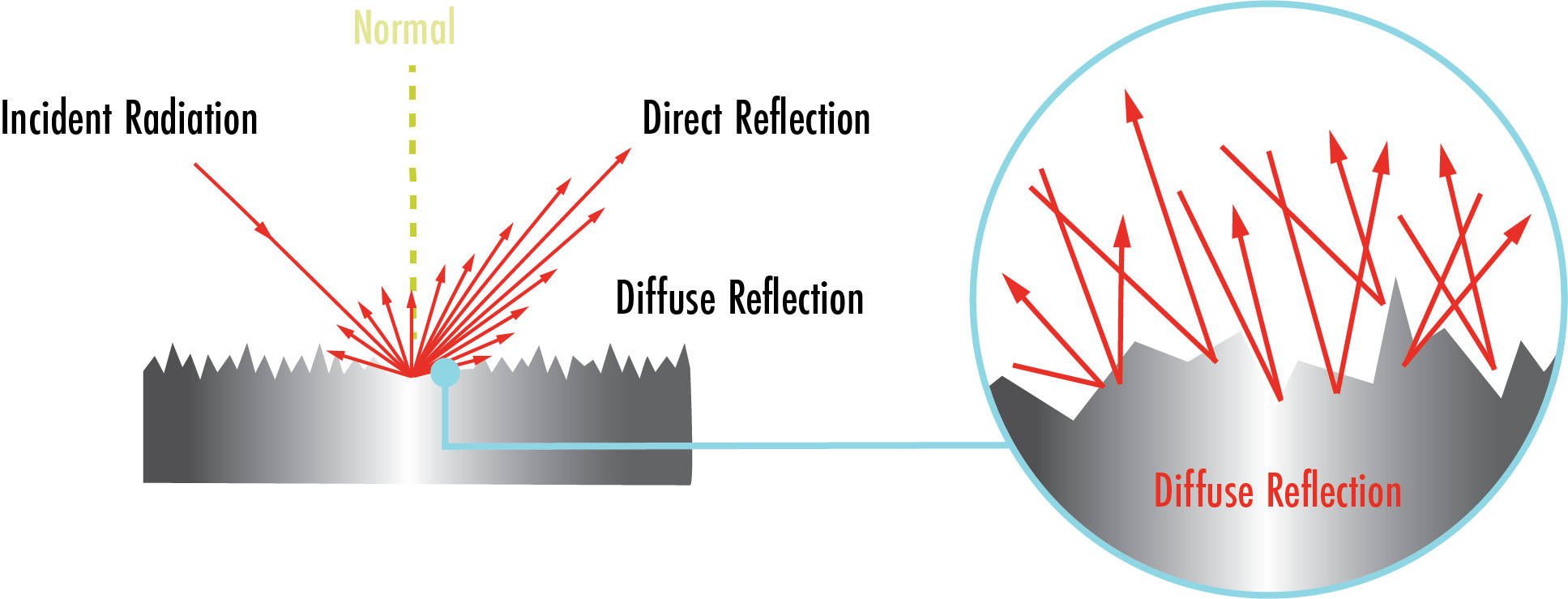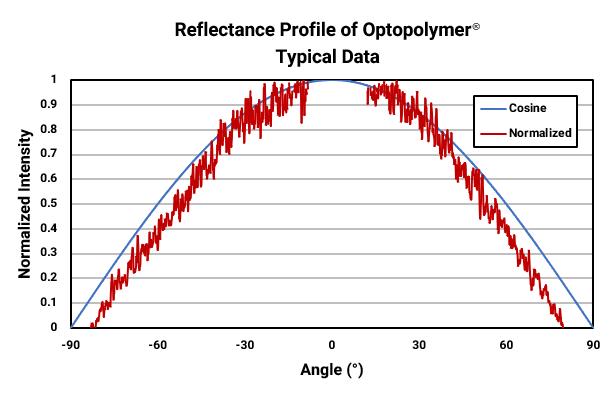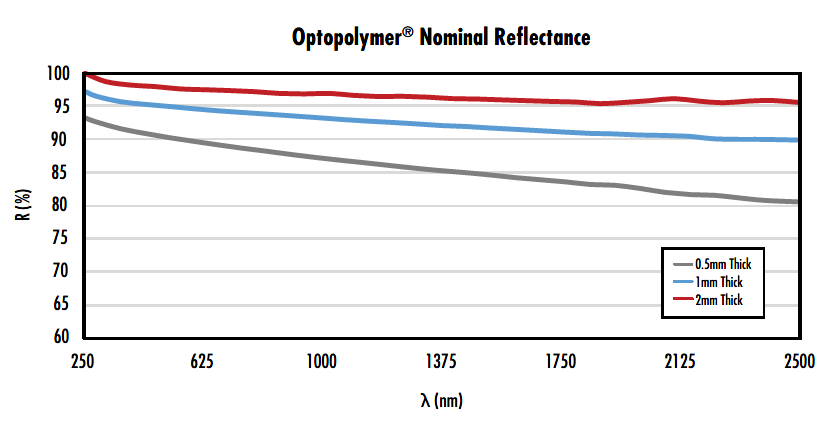
Optopolymer® Diffuse Reflecting Film consists of optical polytetrafluoroethylene (PTFE) which achieves virtually ideal Lambertian reflectance properties and high reflectance from 250 to 2500nm. The thickness of the polymer layer influences both the flexibility and reflectance of the film with the 1.0mm film providing the best flexibility to reflectance ratio. A 0.5mm thickness provides the best flexibility with a small decrease in reflectance, and a 2.0mm thickness provides the highest reflectance with increased rigidity. Regardless of the thickness, the film can be easily cut to size using scissors and with the adhesive backing and can be tailored to fit any application. Optopolymer® Diffuse Reflecting Film feature high UV stability and universal chemical resistance to minimize discoloration that would result in reflection loss. These reflecting films are ideal for calibration and contrast measurements, projection applications, lining UV sterilizers and photobioreactors, and as reflective diffusers.



or view regional numbers
QUOTE TOOL
enter stock numbers to begin
Copyright 2023, Edmund Optics Inc., 101 East Gloucester Pike, Barrington, NJ 08007-1380 USA
California Consumer Privacy Acts (CCPA): Do Not Sell or Share My Personal Information
California Transparency in Supply Chains Act